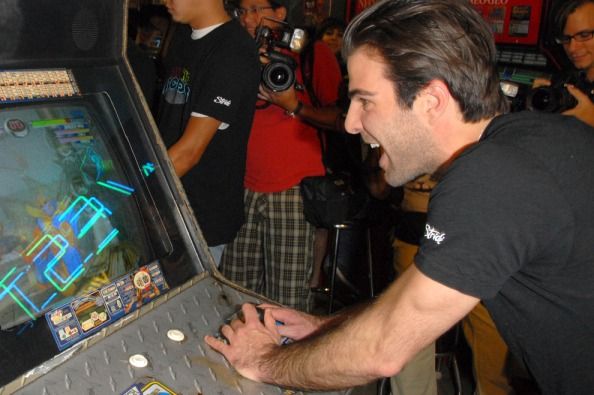
SAN FRANCISCO — Forget Pac-Man: Scientists are working to fill arcade games with real-life microorganisms that wiggle toward points in response to an electrical field.
From truly biological video games to reverse-engineered genetic machines, researchers at the research center swissnex here in San Francisco Thursday (April 4) discussed how the insatiable desire to play games could help solve scientific problems, improve learning and even treat psychiatric conditions.
Real-life games
Whereas almost all technological developments — from the wheel to the computer — have led to new games, "there's nothing gamelike in biology," said Ingmar Riedel-Kruse, a bioengineer at Stanford University.
To solve that problem, he developed action games that use real-life organisms. In one game, players direct a weak electric field to drive single-celled organisms called paramecia, which are video recorded and overlaid on a screen. As the paramecia wiggle around, they appear to eat coins, Pac-Man-style, and rack up points. [The Coolest Math Games]
The new games could teach biology principles to school children. Biotic games could also solve real-life scientific problems by taking advantage of gamers' natural propensity to hack games to figure out their rules, Riedel-Kruse said.
And although the current iterations still require lab work and maintenance to keep the paramecia alive, the researchers are hoping they can design a stand-alone "biotic arcade" game with real creatures swimming inside.
Sign up for the Live Science daily newsletter now
Get the world’s most fascinating discoveries delivered straight to your inbox.
Real-world problems
Other researchers are luring thousands of gamers to create tiny molecular machines that could be used in the body.
The computer game Fold-It already invites players to manipulate the 3D shapes of proteins in order to predict how they fold in real life. The game play has already yielded several candidate protein structures that have been tested in the lab.
Now, the same researchers have developed a new game, called EteRNA, which challenges players to design the sequence of RNA, a molecule similar to DNA that carries out genetic instructions, so that it bends into weird shapes that could then be made into nanomachines.
In typical reality-show fashion, every week, the game-makers have players vote on which sequence is likeliest to succeed. Then, scientists synthesize the top-rated structures in the lab to see how well the game predictions match the real outcomes.
"It's crowdsourcing the entire scientific method," said EteRNA co-designer Adrien Treuille, a computer scientist at Carnegie Mellon University in Pittsburgh.
Neither humans nor computers were initially good at predicting how an RNA sequence would fold into specific shapes, Treuille said.
But after six months of game play, the worst player was better than the best computer at designing these structures.
Thus, the game play revealed new scientific insights for RNA-engineering that computer programs based on established scientific knowledge couldn't.
Learning from games
Scientists are also hoping to use games to help people learn. The idea of brain games isn't new, but scientists at the University of California, San Francisco collaborated with a video game lab to make a graphics-filled, ultra-high-quality video game that could help players improve their attention-deficit/hyperactivity disorder symptoms. The game is currently undergoing clinical trials.
Another team is trying to tweak existing video games, such as SimCity, to help teachers gauge how well students understand scientific concepts. By getting feedback on students' playing, scientists could help design the games so that they subtly shift the level of play to boost children's understanding.
Though the research is still in its early phases, if it works, the morphed SimCity could provide a huge amount of data on how students learn.
Follow Tia Ghose on Twitter @tiaghose. Follow LiveScience @livescience, Facebook & Google+. Original article on LiveScience.com.

Tia is the managing editor and was previously a senior writer for Live Science. Her work has appeared in Scientific American, Wired.com and other outlets. She holds a master's degree in bioengineering from the University of Washington, a graduate certificate in science writing from UC Santa Cruz and a bachelor's degree in mechanical engineering from the University of Texas at Austin. Tia was part of a team at the Milwaukee Journal Sentinel that published the Empty Cradles series on preterm births, which won multiple awards, including the 2012 Casey Medal for Meritorious Journalism.











